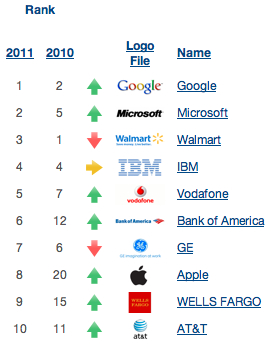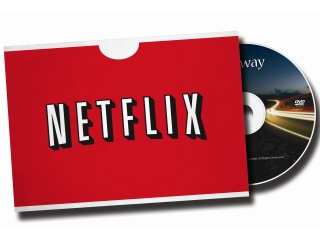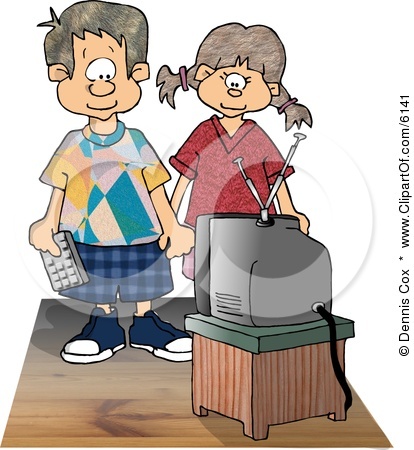Have you read Brand Finance today? Who do you think is the most valuable brand in 2011?
.
..
…
….
…..
According to Brand Finance, these are the top ten most valuable brands:
 Surprise, surprise… well, not really… but Google is King! Google’s rise in the ranks as well as half of the top ten brands’ roots in technology really reflects society’s increasing tech-savvyness and its dependence on the Internet. Google was also crowned most desirable brand of the year.
Surprise, surprise… well, not really… but Google is King! Google’s rise in the ranks as well as half of the top ten brands’ roots in technology really reflects society’s increasing tech-savvyness and its dependence on the Internet. Google was also crowned most desirable brand of the year.
Five marketing tips we can learn from Google (IBM, 2011):
- Be consistent, not paranoid
- Share an understandable mission
- Reinforce the brand suite
- Don’t rush to rebrand acquisitions
- Be brutal about brand simplicity
Honestly, although the Internet hasn’t been around for all that long and neither has Google (founded in 1998), it seems like it has because since I first started using it, Google has kept its brand constant and has never changed its logo. Although I find the logo is unattractive at times, Google’s consistency over time has allowed its brand to permeate across generations – people of all ages across the globe know who Google is. Every time they come out with something new, it’s always Google(this) or Google(that) in always the same font, always the same colour. But hey, it works – we all recognize it. If anything, I think most of us associate Google with easy internet search; information you want when you want it. (I can hear the marketers cheering right now – “Success!” they cry.) But now that they’re at the top, it’s time to watch out for the underdogs.
Apple is another phenomenal brand success, having moved up 12 ranks in a single year which is extraordinary for such a young company. Like Google, Apple’s brand speaks for itself and Apple has garnered immense loyalty and I can see it skyrocketing up the chart in 2012.











